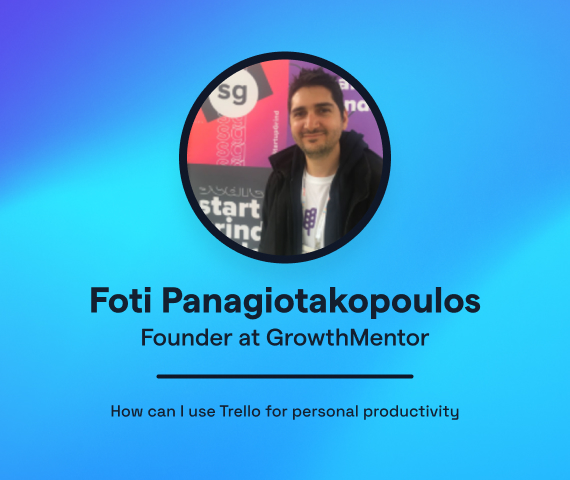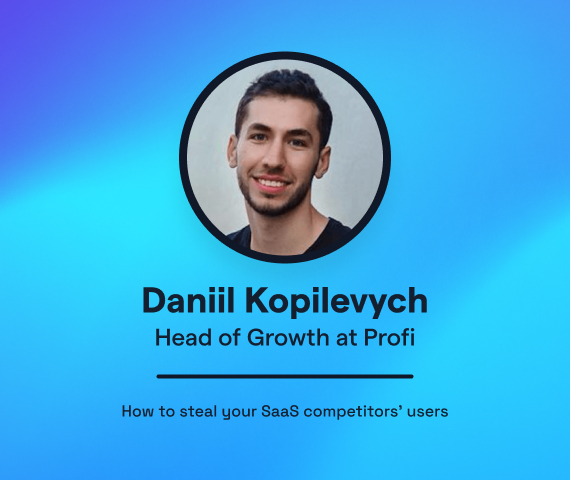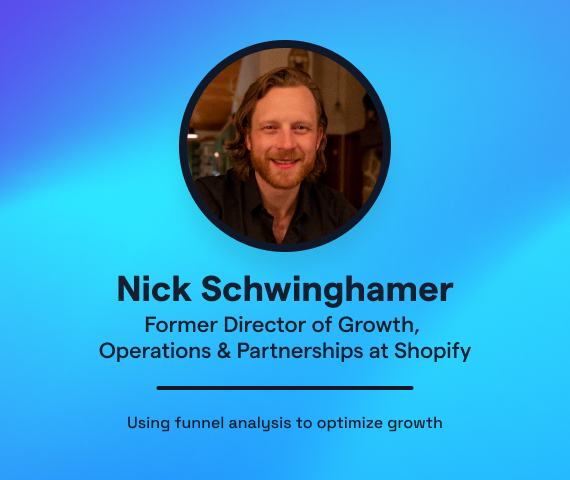Starting a Growth Team
What Does Growth Mean?
First things first, let’s take a look at the definition of growth in the start-up world.
Growth is the process of applying scientific methods to optimize customer and business metrics. The aim is to drive revenue, acquisition metrics, customer engagement, and retention or referral activity.
Within a growth cycle, you start with hypotheses, do experiments to prove or disprove these, and then learn from the results of those experiments to inform future experiments. Simplified, the cycle looks like this:
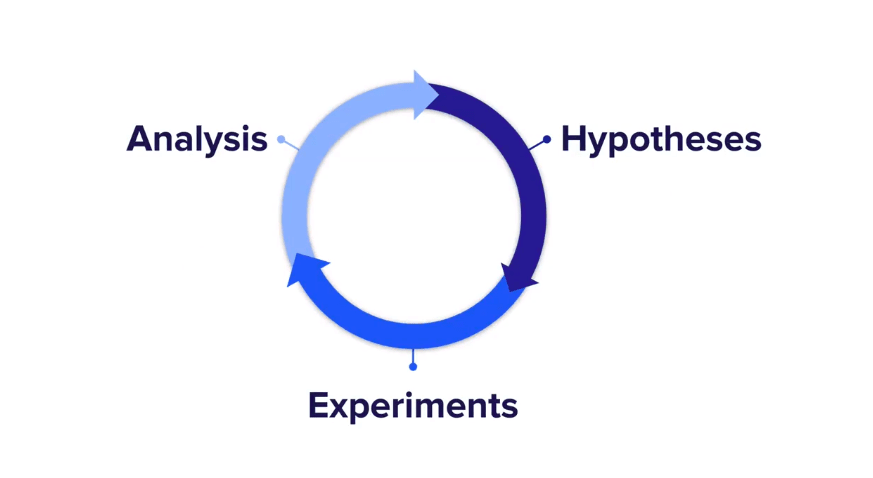
It’s a simple process but challenging to execute well. In a typical start-up, the product teams build the core value, and the growth team connects the customers to that core value as often as possible.
Are You Ready for a Growth Team?
The first question to ask yourself when thinking about building a growth team is, do you have a product-market fit?
One of the biggest reasons start-ups die is premature scaling.
Are you delivering on your promise to your customers? Do you have good customer retention? The retention curve should be moving up and becoming flatter over time.
Compare your retention with baseline retention in your industry. If your retention is weak, keep iterating on your product before building a growth team.
You should know if your customers are happy because they will be engaged, singing your praises and referring others.
A more measured approach to assessing your product-market fit is to use the Sean Ellis framework. Ask customers to fill out a survey that questions how they would feel if they could no longer use your product. For sustainable growth to be achieved, at least 40% of your customers need to answer ‘very disappointed.’
For those who answer ‘very disappointed,’ learn everything you can from them about why your product is a must-have. Their feedback will help you identify the right market segment to go after things critical to building out a growth team.
The number one rule is don’t start spending money on growth if you don’t have a product-market fit.
Lessons Learned: Things to Keep in Mind When Building a Growth Team
1. Expect friction
People get nervous about organizational changes. Not everybody believes in data. One of the biggest pushbacks you can get when building a growth team is a lack of leadership buy-in.
People will feel threatened when you start experimentation. It makes them feel like they lose control of the customer experience. Product teams may freak out about growth experiments that touch their customers.
What’s the best way to mitigate this? With communication. Make sure you have allies in your organization. Make ownership clear from the start and ask for feedback. You want to understand your growth model and the problem your team is solving.
Make sure you align the organization; having the CEO on board is critical. Constantly talk about the mission, the growth team’s role, and value in the organization, get people excited about it.
Post metrics on wallboards, posters with your mission. Make sure everyone knows what they are getting as part of having a growth team. Rotate internal people through the growth team. Make experiment results public both successes and failures. Sharing what you learned will help build trust in the team, and you will get less pushback.
2. Start Small, Build Momentum
You will have different levers to focus on. Choose one lever to focus on first. Say that’s onboarding. Run some experiments, get some successes, focus on that.
Once you’ve proved yourself, you will be able to start building out the team more. Get some early wins before you begin to take on the whole world!
3. Know When to Hit Pause
It’s OK to refocus resources on the core business if the market changes. Sometimes you are working on a growth team, and the business’s priorities will change, or the market will shift.
It’s fine to refocus resources and restart the growth team later on.

What is a Growth Model?
Your growth model helps you understand the levers you have available to grow sustainably over time. You can map out in fine detail the inputs and outputs of each lever to quantify the opportunity.
Rank each opportunity and pick which problem is the most important to solve at this time. The team’s mission needs to be different from the product and marketing team, so the metric is clear for them to own.
Here’s an example of a problem and the growth model that can be used to solve it:
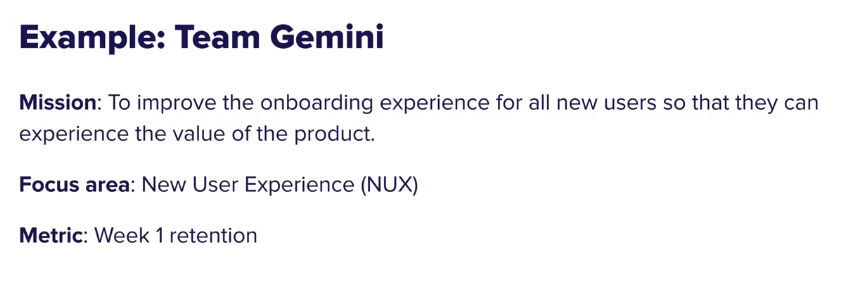
A healthy amount of users are signing up but not activating their accounts. There may be many reasons for this. You conduct some user research and find out that they don’t know how to get started. This is a problem you can use your growth team to solve. You can measure the team’s impact by measuring how many users are retained after seven days.
Based on this, set a realistic goal to improve the metric by, say, 30%, resulting in X expected revenue benefit.
Quantifying the financial benefit of the growth team is essential to get the buy-in from the functional heads to get resources to start building a team. Growth teams are expensive, so you need to rationalize the decision.
How to Build a Growth Team
Having a growth team is not an overnight solution and shouldn’t be the entirety of your marketing strategy. Growth amplifies the value the product team is making.
The way you structure your growth team depends on your company’s structure, culture, and business model.
So you have buy-in from your organization’s leaders? It’s time to start building the team.
What Are the Growth Team Roles?
You want a cross-functional team that you can hire internally or externally. You want people who can get shit done and move quickly.
Remember that not everyone is excited by this type of work. They need to be happy with working with shorter feedback loops and having an impact on the customer. The designer, for example, will work on 2-3 day efforts, not like the 2-3 week effort they may be used to working on.
Key roles needed in the team include a growth PM, engineers, a designer, an analyst, and a marketer. For those last two, you will likely need to steal people from other teams.
Remember that messaging is a craft, and having an expert who can create powerful messaging is one of the most important elements of the team.
Key roles and skill sets needed on team:
- Growth PM – you’re responsible for the experiment roadmap
- 2 Engineers – responsible for implementing the experiments
- 1 Designer – responsible for designing the experiences that we’re testing
- .5 Analyst – provide insights and analysis for the team
- .5 Marketer – responsible for messaging + customer communication
How to Recruit For This Type of Work
These criteria are based on the experience of interviewing and hiring people for growth teams in the past. What qualities does your ideal growth team member need?
They are:
Impact Driven
Good growth people need to be motivated by producing results. You can look for this when they talk about their past work. What metric were they trying to move?
If they don’t talk about how their work was impacting the business or the customer, they aren’t a good fit. Vanity metrics are also not a good fit! Another good trait to look for is if they are competitive?
Speed
They need to be able to move fast. You don’t want people who get stuck in analysis paralysis. You want people who know when they have enough information, even if it isn’t perfect.
Do They Think With Data?
Ask when the last time you used data to make a decision was? What would you have done if no data was available?
These questions show if people have worked in growth before or not. Are they creative thinkers? Can they articulate the pros and cons of each solution?
Grit
It can be stressful to work in growth – you work at a fast speed. You may not know what you are working on from one week to the next. You may be expected to wear many different hats throughout the day.
Where Should Growth Sit In the Organization?
A Cross-functional Team Structure
This is the easiest to fit into an organization. You are consolidating work and resources that are already happening in the organization. This is the most straightforward change to unship if it doesn’t work out.
Independent Team Structure
Hire a VP of growth who is responsible for the profit and loss. This can be the most expensive option; it can be hard to justify the cost and value those teams provide.
Hybrid Models
Marketing teams can have their growth team; sometimes, product teams have their growth team. At some point, as you go, you will want to consolidate efforts as there will be more focus on building out infrastructure and aligning on the same goals.
You will need to make sure you aren’t crossing polluting experiments and creating cohesive customer experiences.
Finally: It’s Ok to Shift Focus
At some point, your growth team may hit their local maximum. They’ll be banging their heads on a problem; they will have captured all the low-hanging fruit. At that point, you have to decide on doing more innovation testing, trying to test more radical ideas, or moving them on to different focus areas.
There’s a lot of pros and cons to doing that. If you think about your growth model, you will have a stack rank of all the different priorities and focus on top priority. Once you’ve made some progress there and hit the results you’re expecting, move on to the next most significant priority.
Mapping out the growth model becomes essential to see the inputs and outputs of your growth team. This will help you determine quantitatively where the team should be focusing their efforts. You want your growth team to provide as much value as possible.
